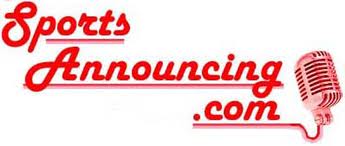The pronunciation guide can be as valuable as gold, or as useless as yesterday’s trash. The guide below will help you develop a pronunciation guide that is useful for all who are behind a microphone.
The pronunciation guide can be as valuable as gold, or as useless as yesterday’s trash. The guide below will help you develop a pronunciation guide that is useful for all who are behind a microphone.
Step 1 – Use obvious words and phrases when writing your guide. If you start using characters that aren’t in the 26-letter alphabet, you’ve already lost a lot of people. For example, “RON-ski” is a lot easier to read than “RAHN-skee”. They say the same thing, but the pronunciation guide is to make it easier for someone to say the name, if they’re having to figure out what you’re writing you missed the objective.
Step 2 – The dominant syllable is in all capitalized letters. Similar to the above, the accented syllable is the first syllable. ron-SKI and RON-ski are two different sounding names. Only use ALL CAPS for the dominant or accented syllable.
Step 3 – Capitalization of the first letter of the name is not needed and is confusing. For example, Kansteiner the second syllable is accented, “can-STINE-err”. Capitalizing the “c” in the first syllable would make it more difficult to read quickly.
Step 4 – Do not include obvious names in your pronunciation guide. If you receive a pronunciation guide that lists obvious names like Jones, Wilson, Gold, etc. and you write them as “Jones”, “Wilson”, “Gold”, you will lose credibility. It also makes it harder to find the names that would need help.
Step 5 – Include support staff and city name pronunciations if you have them on your roster. Lutz, Florida is pronounced “LOOTS”. Skaneateles, New York is “skinny-AT-less”
Step 6 – Add obvious notes to help like “sounds like”, “similar to” or “rhymes with” and use something common. “Halley – like Halle Berry”
Additional Tips
- Record each of your players saying their first and last name clearly at least three times, preferably in a quiet environment and upload those to your website.
- When writing your roster, write the name the player wishes to be announced as or what they are more familiar with in a social setting. Writing Billy instead of William, Dougie instead of Douglas or Bit instead of Elizabeth helps the announcer and prevents awkward situations for your team.
- Always be updating. If something doesn’t look or sound right, redo it or update it. It’s fine.
A pronunciation guide that is thorough and most importantly easy to read will be appreciated by many who get behind a microphone. However, don’t be upset if that person still confirms pronunciations with coaches, SID’s, Athletic Directors, or another representative of your team. They are being thorough in their duties to put on a professional atmosphere.
While you can often find pronunciations by searching Google or YouTube, there is a website called How To Pronounce that is crowdsourced and is great to have saved on your computer, smart phone or tablet.
 SportsAnnouncing.com
SportsAnnouncing.com 












Leave a Comment
Your email address will not be published. Required fields are marked with *